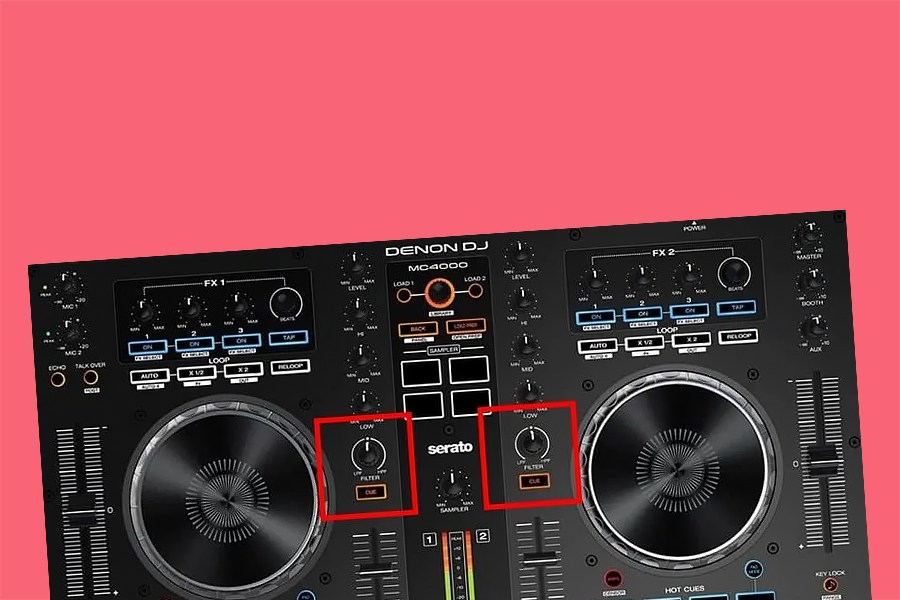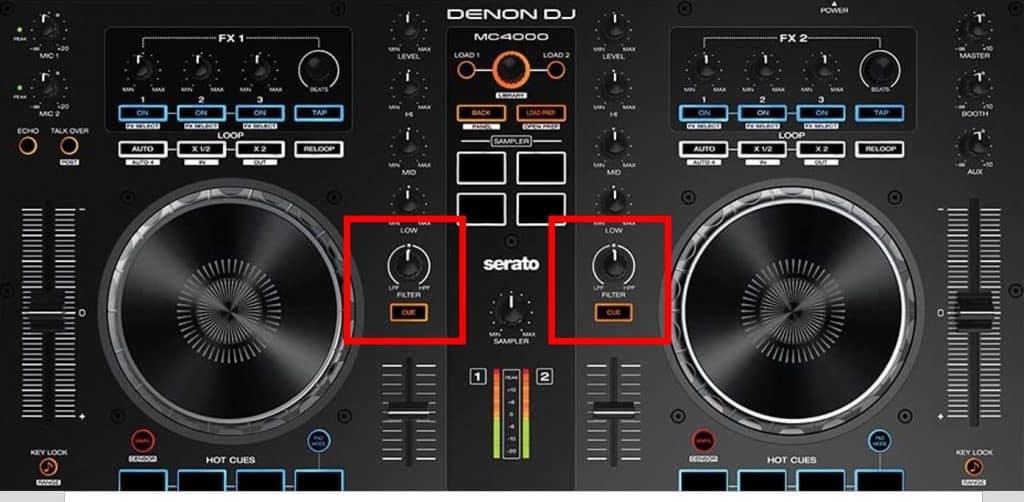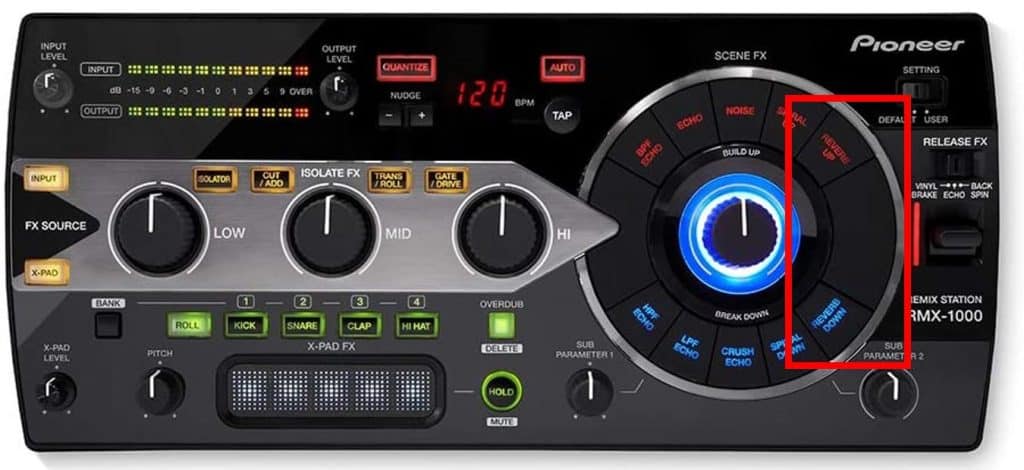While DJing has been around for a very long time, with new technology and products constantly coming out the standard of this industry has been raised to a new level.
One skill that is essential to master as a DJ is how to use different effects during your sets. While using the right DJ effects can make your audience dance to the rhythm, the wrong application can ruin the entire production.

What are DJ Effects?
Top DJs around the world make use of effects to create a dynamic experience for their audience by skillfully incorporating them throughout their mix.
DJ Effects are controls or presents that can alter the sound of any track. There is an array of different effects that a DJ can use that range from extreme sound warping to light and airy alterations and from rhythmic to extreme.
The hardware and software used for DJing offer a variety of different built-in effects. The amount of variety offered varies with the type of hardware or software being used. Usually, there is an effects section on the top of the DJ gear.
It is the most common practice among manufacturers to place the effects section on top of the equipment. All the extra buttons and knobs are located at the extreme top of the hardware gear.
There are a variety of different effects that can help DJs enhance their performance and outperform their competitors. Starting from the most basic one, EQ, others include echoes, filters, phasers, delays, and many others.
Top DJ Effects
If you are one of those musicians who want to learn the skills and magic of DJing, you need to start playing with the following DJ effects. These are the most common ones to use, and they can significantly improve your performance.
Filter – Two Effects Combined into One
The first effect that you need to try your hand at is the filter. This is probably the most common effect DJs throw into their mixes.
A filter is a combination of two different effects. Using different types of filters (high pass vs low pass), you can eliminate different frequencies. Many performers throw this DJ effect in to help with transitions.
If you want to cut some high frequencies, you simply have to turn the knob to the left until you hit that perfect mix. Turn the knob to the right, and you can cut the low frequencies. Try different combinations to mee the ideal blend of frequencies that will help you create a signature piece.

Many people might choose an EQ to make some changes to the bass, but if you want some fun, choosing a filter is the perfect option. The high pass filter is a better choice to cut the bass than the usual low EQ.
Also, if you are looking to add some drama and tension to your set, a filter can help you with that too. DJs use filters in extended buildups or breakdowns because it is the ideal tool for such scenarios.
While using a filter is pretty simple, you can easily misuse this effect due to its ease and simplicity. Many amateur DJs make this mistake while creating their first mixes. Be sure to get feedback on every mix so you can finetune your use of this effect.
If you can ace the filter game, you will automatically improve your mixing skills, which is one of the fundamentals of the DJing craft. Once you learn how filter impacts your sound, you will know exactly how much to use and exactly when to use it.
Phaser – Brings Dynamic Energy to the Floor
When talking about the best DJ effects, the next in line after the filter is the phaser. It is another DJ effect that has long enjoyed the attention and popularity in the industry.
The phaser effect makes the sound look like it is emerging from a rotating speaker. Now, how do you describe the music coming out of a rotating speaker?
Well, have you ever heard a siren while driving on the road or while at home? As the distance between you and the sound increases, the tone changes. Even though it is the same sound, you hear it with a different tone.
Without getting all sciencey here, that’s called the Doppler effect. Look it up.The phaser effect is known to bring dynamic energy not just into the track but also to the dance floor.
The phaser effect works by modifying the length and depth of the soundwave. If you want to make the end of the spectrum to stand out and be prominent, you need to take the phase deeper. The deeper you go with the phase, the more pronounced effect it will have on the track.
Another factor that you can alter with this is the speed at which you want the speaker to rotate. An individual who can master the usage of phaser can add a sweeping panoramic feel which can take the listeners by a storm. Great for instilling excitement and creating hype on the dance floor.
Reverb – Deeper and Haunting Music Feel
Have you ever tried playing in a large room? Like a hall or a cathedral? Well, if you have, you will know exactly what reverb does. People who have DJed in both small and large rooms know that there is a huge difference. If you are playing in a small room but want to add the effect of a large room, then using reverb is your best move.
Reverb builds on the size of the room, giving the sound a haunting and deep feel. The most common way to use this effect is during breakdowns as it fills the gaps with a haunting feeling by giving the vocals a deep edge.

Reverb can be challenging to implement properly but it is a common DJ effect. Balancing and finding the right spot is a challenge. If you can learn using reverb, you will be able to match the effect of playing in a large room without making it sound hollow or too distant.
In addition to using the filter for transitions, reverb is also a smart option for blending different tracks. It can work wonders for helping you create smooth and flowy transitions in your DJ sets. A way that you can learn to use this in transitions is by making the original track sound further with reverb at the moment your version is being introduced.
Many DJs like to use reverb to highlight specific parts of the song, and it can boost the impact when used on staccato sounds like claps or snares.
Whether you choose to use this effect on a breakdown or buildup, the right strategy can make your set stand out among the sea of sets by other DJs. It is a smart way to add the element of surprise and curiosity among the audience as it gives them a feeling that a change is about to hit the track, which can be super exciting for fans of EDM, electronic, techno, and even house music.
Echo – The Fading Away of Sound
An echo is the repetition of the sound until it progressively fades away. In DJing, the echo effect brings the same effects. The echo DJ effect is also known as the delay effect. When applied to a part of music, it will repeat that section and then progressively diminish it.
You can use the knob to set the length for which you want the echo to continue. The echo is another effect that is common during transitions from one song to another. It is used to give a form of ‘carry-over’ to the first song as the second song fills the air. Do you know what works well with echoes? Slower basslines. The combination is one of the best ones in the industry and can be used to add depth to track.
It is one of those effects that can work well with the vocals. However, to apply an echo to the vocals, make sure that there is a clean vocals section in the song. You need to understand that an echo adds extra sound to the already exiting track.
Too much echo on the vocals can lead to a crowded or busy mix, which can ruin your entire DJ set. It does work amazingly for the vocals, but the wrong usage will create a mess in your track.
If you want to hit the right spots with your echo, try to apply it to recognizable parts of the song. It makes that part more prominent and makes it sound bigger. This is the DJing effect to use if you want your audience to pay more attention to a specific section of the track.
Flanger – An Aggressive Panoramic Effect
A flanger is an effect that is similar to the phaser in many ways. Just like a phaser, it adds a swooping impact on the track, but it has a much more aggressive impact.
Both the intensity and the length can be altered when using the flanger effect. It is mostly used to build up to a drop. You can use it to lift the sound or drop it down. DJs have to be careful when using this effect as when its application moves past the sweet spot, overwhelming the track can ruin a listener’s experience.
Therefore, balance is a necessary step when applying a flanger on a track.
Applying this effect on the sound can help you create a dramatic vibe just before a drop. The timing here is the key to perfection. There are other factors that you need to bring into account, but once you ace the timing game, you are on your way to creating an impressive DJ set.
DJ Effect Controls
To be able to apply DJ effects on tracks, you also need to develop a complete understanding of the primary effects controls. You need to know about the buttons, knobs, menu, and all the other stuff that is in the effect section of your DJ hardware of software.
On/Off Button
Starting with the very basic, the on/off button activates an effect or deactivates it. By tapping this button, you can simply switch on the effect.
Wet and Dry Knob
Another important part of the effects control panel is the wet and dry knob. DJs like to refer to this as the adjustment of the ‘depth’ of an effect. Dry and wet are the two extremes of the knobs. The initial position of the knob will give out the original sound. When you start turning the knob, changes will begin to appear on the track.
To put it simply, this knob allows you to set the level or magnitude of the effect.
Effect Select Knob/Button
The effect select knob serves as the main menu of the panel. Some panels offer a knob while some offer a button. You can choose the effect you want to apply through this effect select knob/button.
Effect Assign Buttons
You will also see the effect assign buttons on your DJ software’s effects control panel. You can use this button to assign a channel to the effect. You can assign different effects to different channels.
Tempo Controls
When talking about software, the tempo controls on it allows you to choose whether to lock the effect on the bear or not. It is where you can finalize the effect, its repetition, and which part you want to apply it to.
Final Thoughts About Learning DJ Effects
Effects can make or break your DJ career. The key is to learn the soft spots and understand the factors of depth, length, and frequency. These are all the effects that you need to know about before getting started. Also, these controls will help you better manage the effects and give your DJ sets a classy feel that impresses the audience and creates hype on the dance floor.
